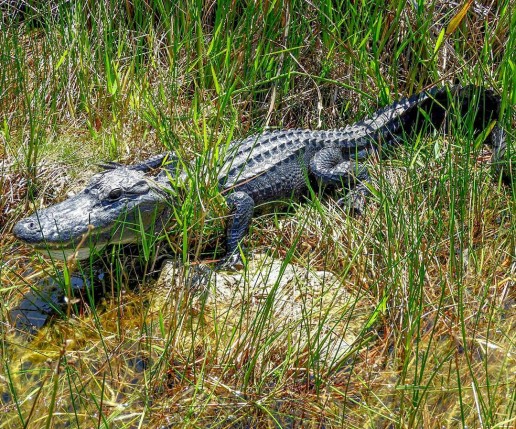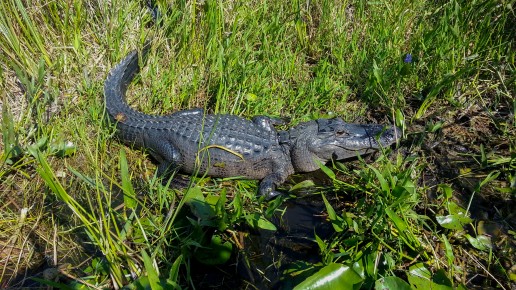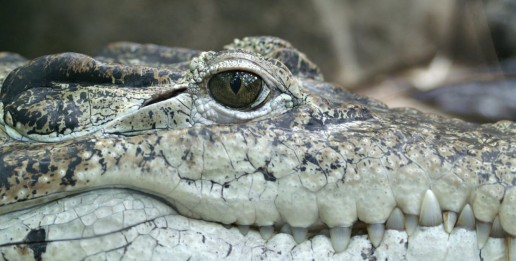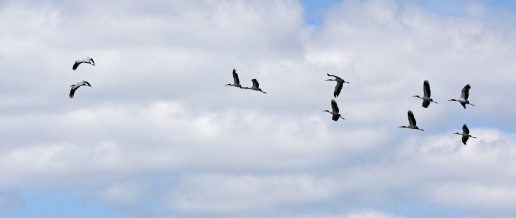5 (Debunked) Alligator Myths
Of all the many animals that live in the Florida Everglades, none are as iconic as the American alligator. Second only to the nesting wading birds of the dry season, alligators are the most popular species of Everglades wildlife. You can learn much about them on alligator tours at Mack’s Fish Camp. But for now, we’d like to clear up a few alligator myths.
Myth #1 – Alligators are slow
Alligators are mostly seen as either floating in water, laying about, or casually walking across a gold course. But, don’t be fooled. Because alligators are ambush predators, they rely on quick bursts of speed to catch their prey. Though not fast, alligators are capable of moving at 10-15 miles per hour from a standing position. In the water, they can swim nearly twice as fast because of their muscular tails!
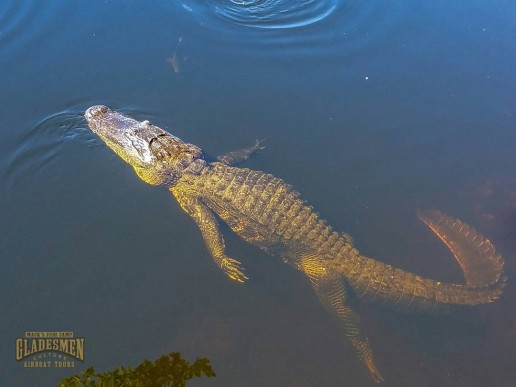
Myth # 2 – Alligators are at the top of the Everglades Food Web
While they definitely close to it, the American alligator doesn’t sit at the top of the Everglades food web. The Burmese python, an exotic invasive species, is now the apex predator of the Everglades, and preys on alligators. Of the alligator myths listed, we wish this one was true, as Burmese pythons have become a significant threat to Everglades wildlife.
Myth # 3 – Alligators are vicious
Intimidating as they look, alligators aren’t bloodthirsty. Their cousins the crocodile, particularly Nile crocodiles, are known as aggressive potential man-eaters. Alligators are quite shy, and try to avoid humans. But, they can become aggressive if you’re near their nest, or if they have been fed by people. Feeding alligators makes them associate people with food, so if you encounter a wild alligator, don’t feed it!
Myth # 4 – Gators can’t climb
Again, that seemingly lazy log with eyes shouldn’t be underestimated. Young alligators are more agile, but adult alligators are very strong and muscular. Adult alligators rely on a combination of their sharp claws and long tails to climb trees and even fences! They can use this ability to pursue prey up trees, though they prefer to “work smart, not hard” and wait under the tree.
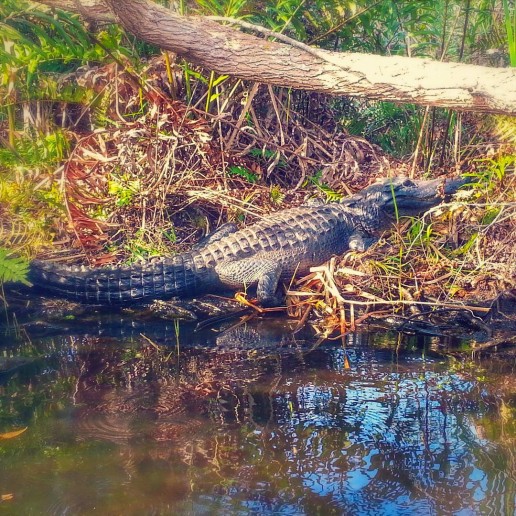
Myth # 5 – Alligators can’t survive without warm weather
Alligators are reptiles, and not only are they cold-blooded, they can’t regulate their body temperature on their own. The Florida Everglades is perfect for them, because alligators thrive in temperatures between 82 and 92 degrees. However, every so often the Everglades is within reach of cold winter weather, but alligators are ready for it. When faced with temperatures of 55 degrees or lower, alligators go into a dormant state, slowing their heartbeat to 1 to 2 beats per minute!
Alligators are amazing and powerful creatures, so it’s easy to fall victim to some of these alligator myths. But with a good balance of curiosity and skepticism, you can discover the truth about these awesome animals. The alligator tours at Mack’s Fish Camp let you see them up close in their natural habitat. You’ll also learn more about alligators and also the Everglades ecosystem from Florida Gladesmen that have lived alongside them for generations.
5 Surprising Facts About Alligators
Alligators may not be colorful like herons, or be cute and small like green tree frogs. But the power, agility, and strong presence they display in the wild fascinate both locals and Everglades visitors alike. Taking an airboat eco tour, you can learn many interesting things about Everglades alligators. For now, here are a few things you might not know about these living dinosaurs.
They Can Jump… and Climb!
In addition to being nimble swimmers, alligators can jump six feet into the sir from a resting position! This leaping ability is mostly for ambushing prey near the water. But they can use it to grab onto tree branches and climb to their prey.
Having that much mobility could mean one of the most dangerous places to be is between an alligator and a meal. Don’t worry, though. They have a natural fear of people, which is fortunate because…
Alligators are Fast Runners
Alligators prefer to stay in or near water, and their strong tails help them swim at a speed of up to 20 to 30 miles per hour (MPH). But if they see a potential meal hanging out near the edge of the water, they can bolt after it on land. As big and heavy as they are, alligators are capable of moving in short bursts up to 15 MPH on land.
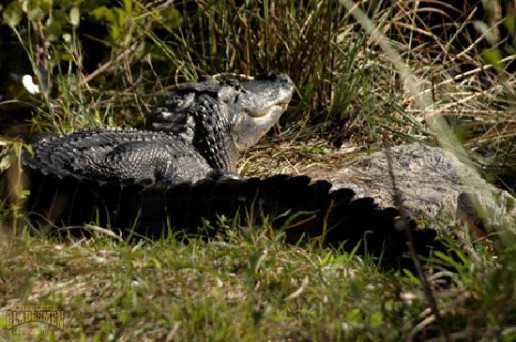
The Sex of an Alligator is Determined by the Temperature of its Nest
Like some reptiles, the temperature of an alligator’s nest determines whether the alligators will be male or female. A temperature below 82.4 degrees Fahrenheit will produce females, and a temperature above 91.4 degrees Fahrenheit will produce males. An even number of both males and females will be produced if the temperature is near 87.8 degrees Fahrenheit.
They Help Maintain the Everglades Ecosystem
Despite their beastly hunting instincts and solitary nature, Everglades alligators give back to their community, whether they realize it nor not. In fact, that solitary nature helps other Everglades wildlife thrive.
When alligators make their homes, called alligator holes, they clear old vegetation away in the marsh. This makes room, for new growth after they abandon their dwelling. Abandoned alligator holes also serve as an oasis to birds and fish during the Everglades dry season, when water becomes scarce.
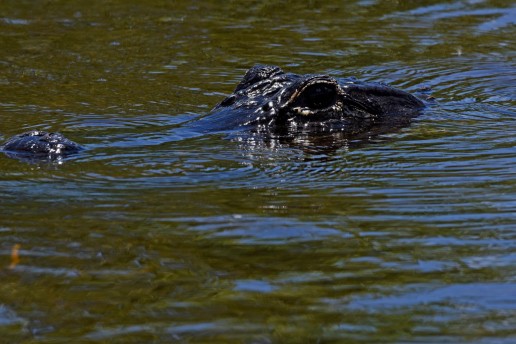
Everglades alligators are not only the most iconic of all the animals here, but the most significant. While they are wild animals and formidable predators, their shyness around humans makes them perfectly safe to view on an Everglades airboat tour.
Just don’t feed them, or even your running shoes might not save you
Alligators and Crocodiles in the Everglades
The American alligator, in addition to being the state reptile of Florida, is recognized as a symbol of the Everglades. While on an airboat tour in Miami, you’ll likely see so many alligators that you’d lose count! But even if you were keeping score, you might be counting some crocodiles by accident.
The American Crocodile
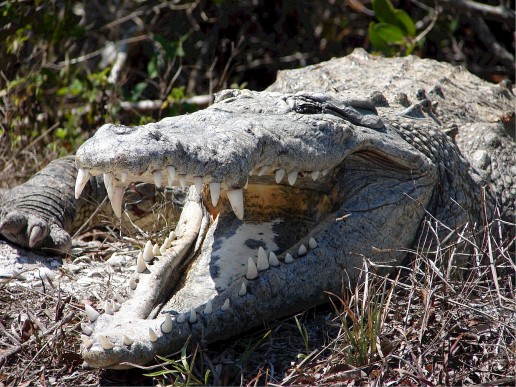
The American alligator and the American Crocodile belong to a reptile group named crocodilians, which are the largest living reptiles in the world! The Florida Everglades is the only place on earth where both species coexist. It is the extreme southern range American alligator and the extreme northern range for crocodiles. At a glance it can be difficult to tell them apart, but there are distinct differences between the two if you take a closer look.
Crocodiles have pointy, longer snouts, while alligators have more rounded, shorter ones. You can still see all of a crocodile’s bottom teeth when its mouth is shut, but gators only show some of their upper teeth. Crocodiles are usually lighter in color, having grey to green backs and white to yellow undersides; alligators are a darker grey or black.
Despite their subtle differences, Alligators and Crocodiles are both listed as “Federally Threatened by Similarity of Appearance”
Other Differences from Alligators

- Alligators and crocodiles both have spots by their mouths called “dermal pressure receptors” that sense tiny pressure changes in water caused by movement, but crocodiles have them all over their bodies!
- Crocodiles have stronger salt glands than alligators do, which makes them more adaptive to saltwater and are often seen near saltwater areas of the Everglades like Florida Bay. Alligators prefer freshwater habitats.
- Alligators have an average lifespan of between 30-50 years, but crocodiles live twice as long as them, with an average lifespan between 70-100 years.
- Crocodiles have adapted to be almost unseen when in the water. While on a private airboat tour, you may only catch sight of their nostrils and eyes poking above the water.
- American crocodiles are typically as calm and aloof as alligators, but are known to be aggressive and can attack anything in the water near them.
These amazing creatures are a valued part of the Everglades. They might appear calm, but they’re still wild animals, and are most safely seen on a guided airboat tour. Being able to observe alligators, crocodiles, and the many different species of Everglades wildlife here at Mack’s Fish Camp on an airboat tour offers an experience like no other!
A Fragile Paradise: Threatened Everglades Wildlife
Here in South Florida, modern life has made the world seem much smaller to people. Unfortunately, the world has literally gotten smaller for several animal species, including those in the Everglades. Their habitat is threatened by human development, as well as longer periods of drought, affecting the water levels that define the Everglades wet and dry seasons. As of January 2017, there are currently 83 species classified as “Federally Endangered” or “Federally Threatened” by the Florida Fish and Wildlife Commission, including:
- Florida Panther
- Everglades snail kite
- Florida scrub-jay
- Florida leafwing butterfly
- American alligator
- Wood stork
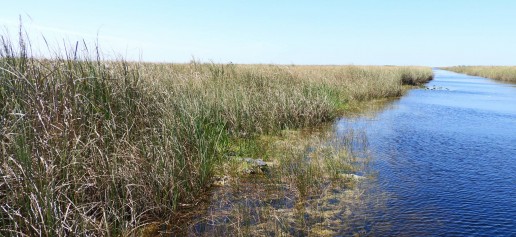
The last two animals mentioned are significant, as both play vital roles in the health of the Everglades’ ecology.
Keystone Everglades Species
Wood storks are one such creature threatened by changes to the Everglades. They are considered to be the “Goldilocks” species of wading birds, because their nesting habits show the health of the Everglades. Wood storks nest during the dry season when water levels are lower, and then feed and train their young as the water and fish population rises.
If the rain season brings too much water, it’s harder for them to find fish to eat. An extended Everglades dry weather season makes their prey scarce.
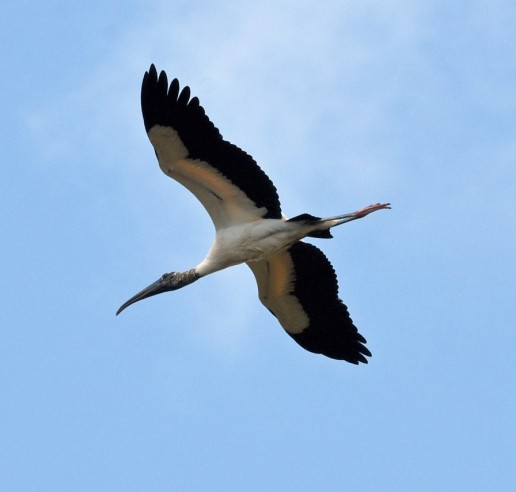
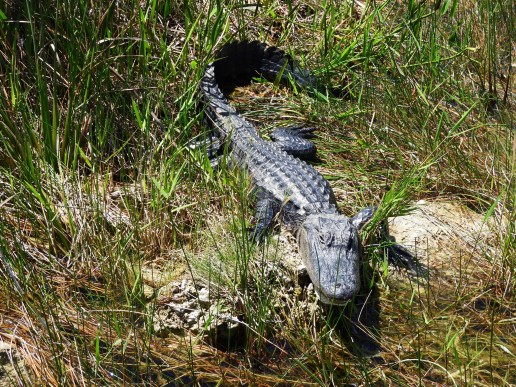
Even the mighty American alligator has seen its numbers decrease, mostly due to human population growth and a demand for their meat and skin. Since being removed from the endangered species list in 1987, their numbers have been improved through farming. Unlike wood storks, alligators play a more direct role in maintaining the environmental health of the Everglades, by making small ponds called alligator holes.
Alligators clear old vegetation when making these holes, which promotes new growth. And once an alligator moves out of one, it can act as a refuge for fish, turtles, birds, and other small animals during the dry season. Even though they have bounced back, they are still listed as “Federally Threatened” due to their similarity of appearance to the American crocodile.

The Florida Everglades is a truly unique place, one that sustains and is sustained by the wide variety of the plants and animals that live here. At Mack’s Fish Camp, appreciation and awareness of the relationship between the many birds, fish, alligators, and the River of Grass is a cornerstone of Gladesmen Culture, and one we’re grateful to share with you. If you’re interested in experiencing the unique beauty of this environment firsthand on one of our Everglades eco tours, please click here.

